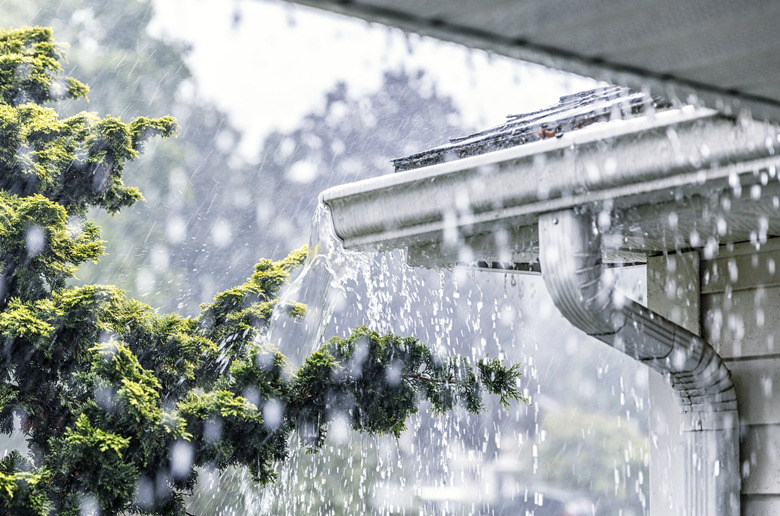Why Is Rain Naturally Acidic?
Not all rain can be considered pure water. Pure water is neither alkaline nor acidic. As rain falls from the atmosphere the impurities it collects changes the pH of the rain water, making it slightly acidic. The pH of water determines if it is acidic or alkaline.
pH
pH
The acidity or alkalinity of water is measured on a scale from zero to 14. The scale used is a measurement of potential hydrogen ions, known as pH. When the pH of a substance is above seven, it is considered a base or alkaline substance. If pH is below seven it is considered acidic, while substances with a pH of exactly seven are considered neutral.
pH of Rain
pH of Rain
Rain water collects impurities as it falls from the atmosphere. One of these impurities is atmospheric carbon dioxide, or CO2, which is a weak acid. It is possible for rain to combine with other substances in the atmosphere that will increase the alkalinity of its pH, such as suspended soil dust, but most rain water ultimately has a pH between five and seven, making it slightly acidic.
Impurities
Impurities
According to the Environmental Protection Agency, or EPA, in addition to atmospheric CO2, sulfur dioxide and nitrogen oxide also contribute to the acidity of rain. The EPA cites the burning of fossil fuels to create electricity as being responsible for 2/3 of sulfur dioxide emissions and 1/4 nitrogen oxide emissions.
Acid Rain
Acid Rain
If rain has a pH below five it can be considered acid rain. The EPA states that, "Acid rain is particularly damaging to lakes, streams, and forests and the plants and animals that live in those ecosystems." The EPA goes on to say that acid rain is formed from both natural and man-made sources. Volcanoes and decaying vegetation naturally increase the acidity of rain, while the burning of fossil fuels are the primary man-made causes of acid rain.
Effects of Acid Rain
Effects of Acid Rain
As acid rain falls on landscapes and ecosystems it begins to change the pH of the affected area. Some areas can neutralize the increased acidity brought on by acid rain, this is known as buffering capacity. However, areas with a low buffering capacity, or inability to neutralize acids, will see pH drop into acidic levels. The EPA states that in these areas with a low buffering capacity the increased acidity causes aluminum, which is highly toxic to plants and animals, to be released into the ecosystem.
Cite This Article
MLA
Balun, Robert. "Why Is Rain Naturally Acidic?" sciencing.com, https://www.sciencing.com/rain-naturally-acidic-6475032/. 8 May 2010.
APA
Balun, Robert. (2010, May 8). Why Is Rain Naturally Acidic?. sciencing.com. Retrieved from https://www.sciencing.com/rain-naturally-acidic-6475032/
Chicago
Balun, Robert. Why Is Rain Naturally Acidic? last modified March 24, 2022. https://www.sciencing.com/rain-naturally-acidic-6475032/
